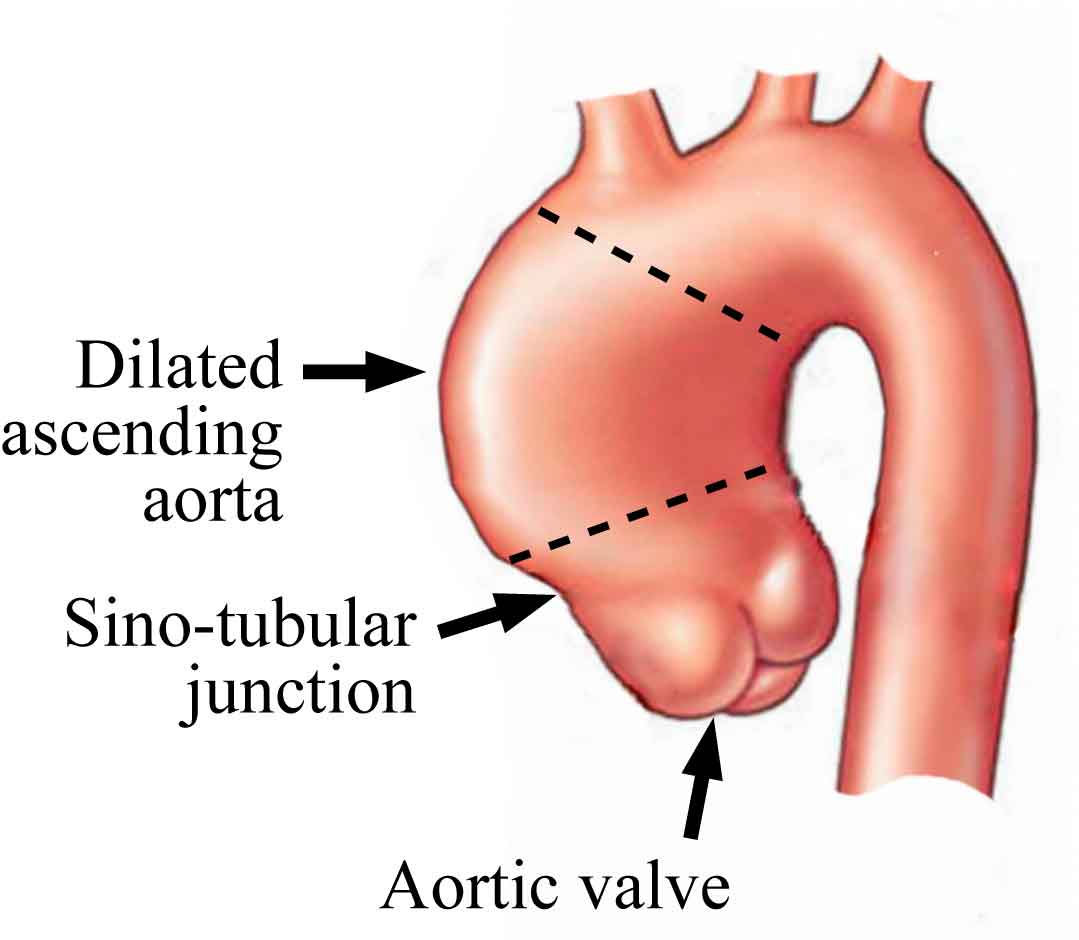Aneurysm Formation at the Ascending Aorta
 The exact mechanisms involved in the pathogenesis of aneurysm formation at the human ascending aorta (AA) are unknown. It is believed that the remodeling capabilities of endothelial and smooth muscle cells combined with abnormal and non-uniform fluid and tissue stresses are precursors to the disease progression. In this work, I wanted to verify if any local remodeling exists in dilated AA and if this remodeling is dependent on the type of aortic valve present. I hypothesized that diseased valves produce different fluid stresses than healthy ones and, therefore, triggering different remodeling patterns along the circumference of the AA.
The exact mechanisms involved in the pathogenesis of aneurysm formation at the human ascending aorta (AA) are unknown. It is believed that the remodeling capabilities of endothelial and smooth muscle cells combined with abnormal and non-uniform fluid and tissue stresses are precursors to the disease progression. In this work, I wanted to verify if any local remodeling exists in dilated AA and if this remodeling is dependent on the type of aortic valve present. I hypothesized that diseased valves produce different fluid stresses than healthy ones and, therefore, triggering different remodeling patterns along the circumference of the AA.
Local mechanical and structural properties
To assess the mechanical and structural properties of the AA, I led a multidisciplinary team of cardiac surgeons, engineers, pathologists, and chemists. I coordinated the sample collection and performed the mechanical and biochemical analyses at the Montreal Heart Institute, Maisonneuve-Rosemont Hospital, and McGill University. Tissues were collected from human subjects during autopsies and elective surgeries. The mechanical assessment was performed at the Montreal Heart Institute using a biaxial tensile tester to quantify the elasticity of each sample. The quantification of the elastin and collagen content was performed at McGill University using an HPLC method. To assess locally the properties of the AA, four samples were cut along its circumference and characterized individually. I also quantified how vascular smooth muscle cells contributed to the mechanical properties of each sample when inducing a contraction of the cells with norepinephrine. I showed that a significant variation exists in elasticity and collagen content along the circumference of the AA. I also found that a reduced contractile strength exists at the outer curvature of the AA despite the increased smooth muscle cell density. This finding suggests that a higher proportion of synthetic smooth muscle cells are present at this location. The latter could explain why the rupture of aneurysms mostly occurs at this location since the syntheic smooth muscle cells can degrade collagen, the load-bearing structure of aortic tissues for remodeling purposes.